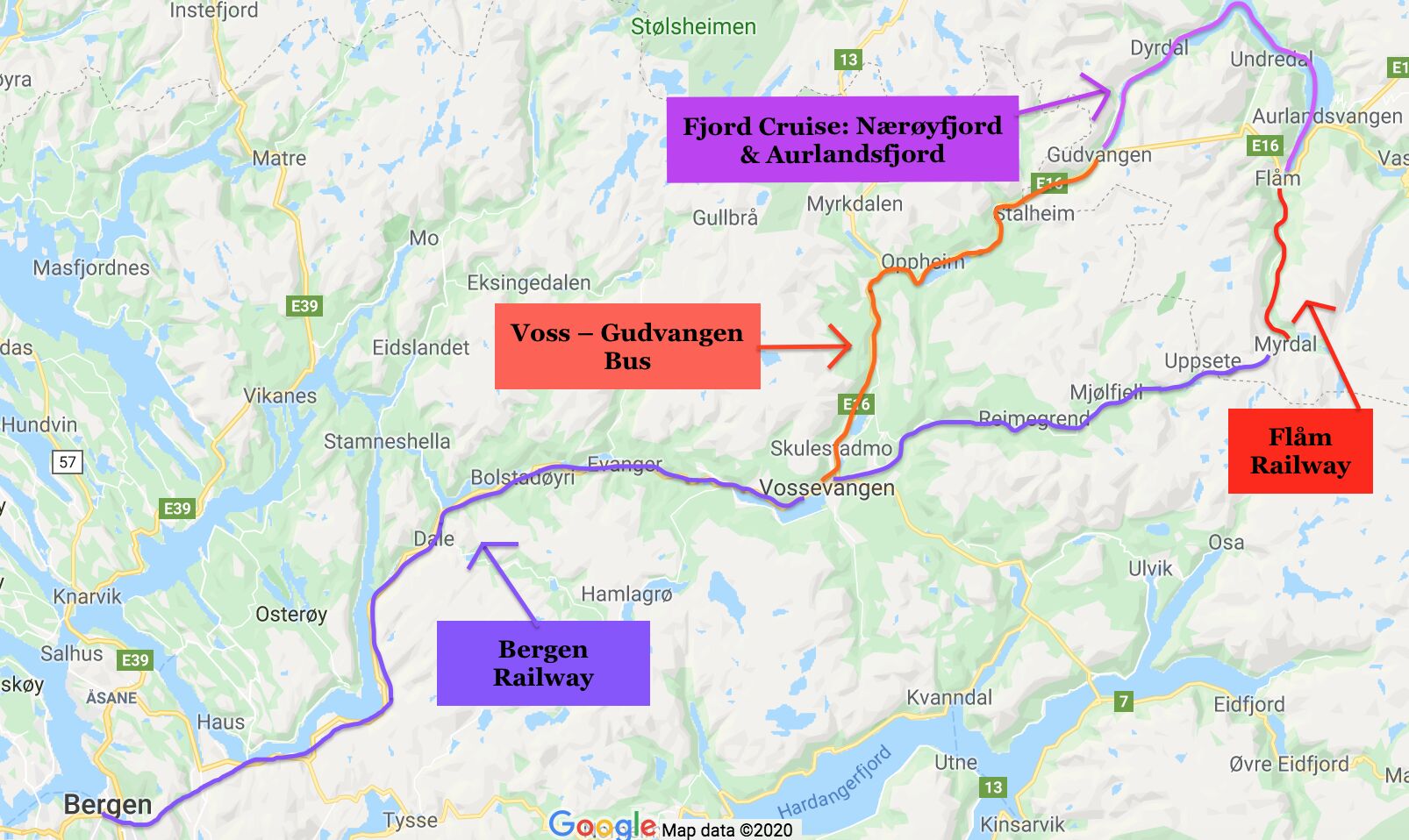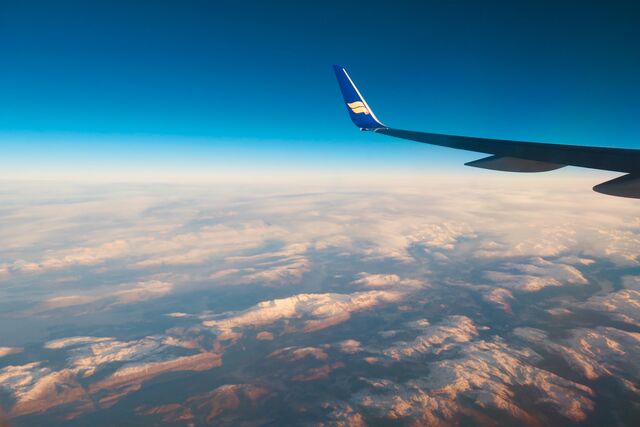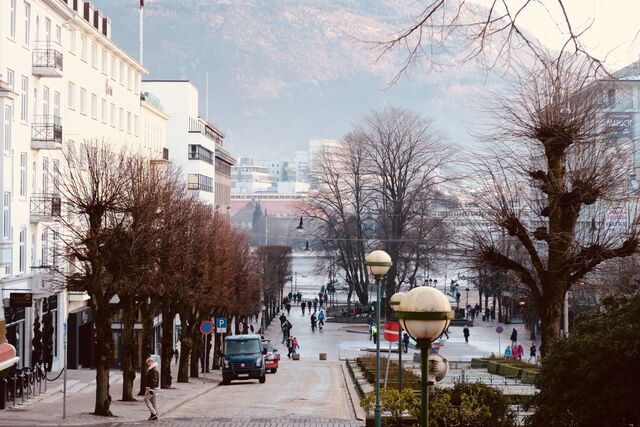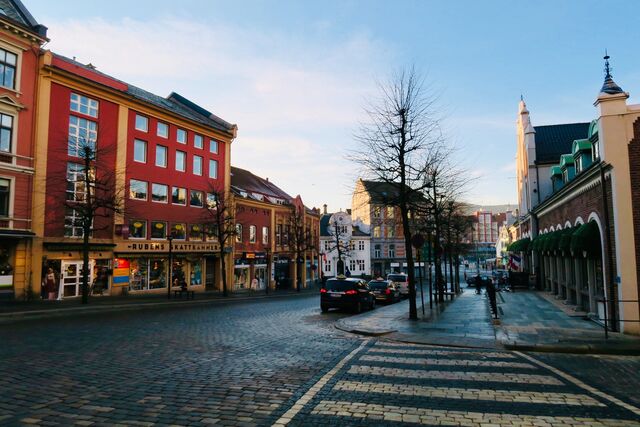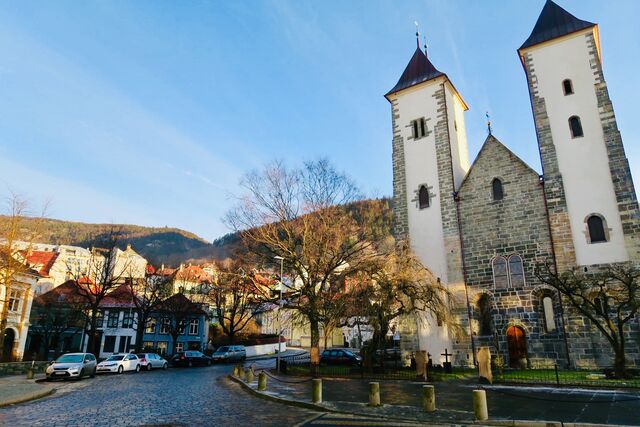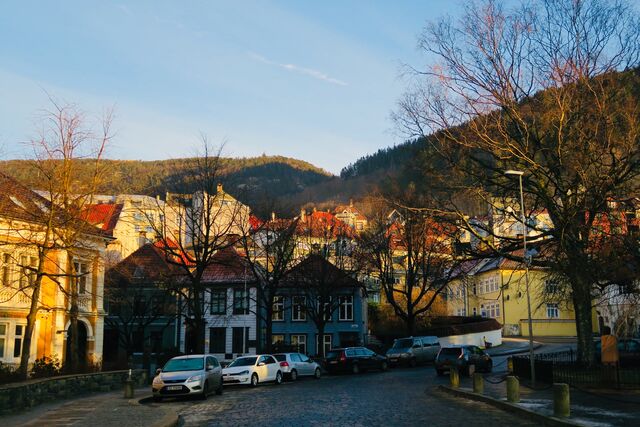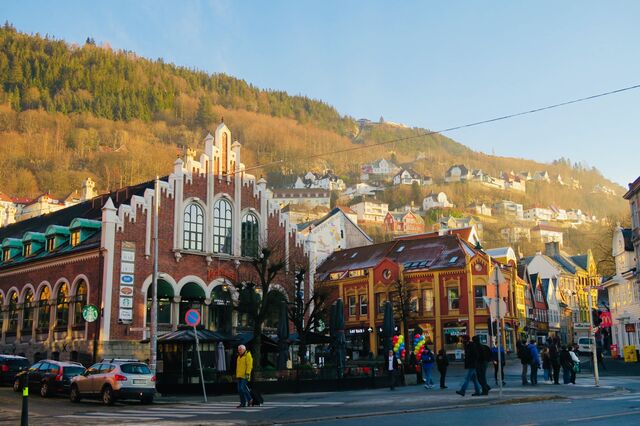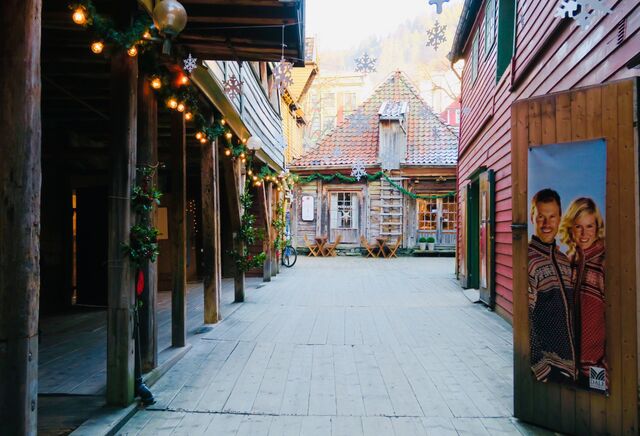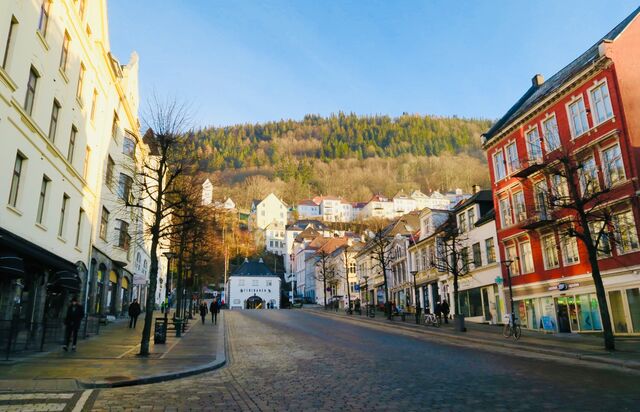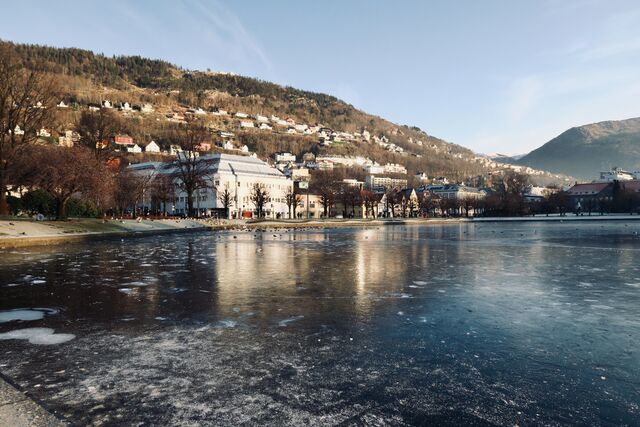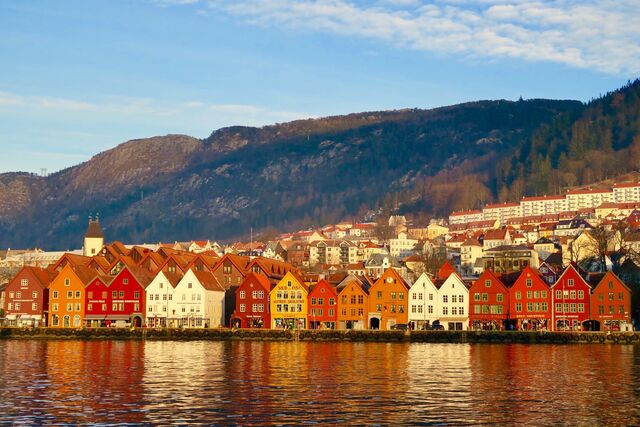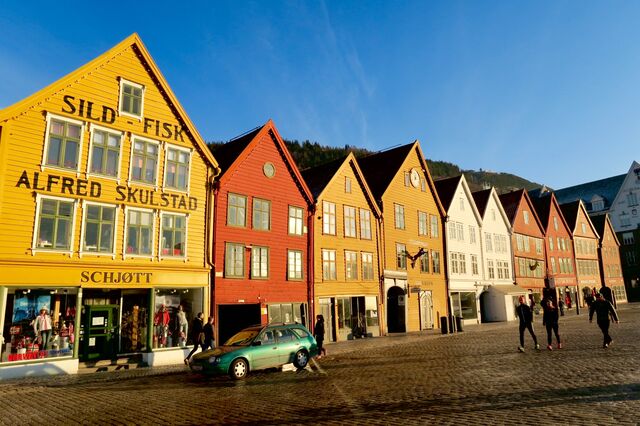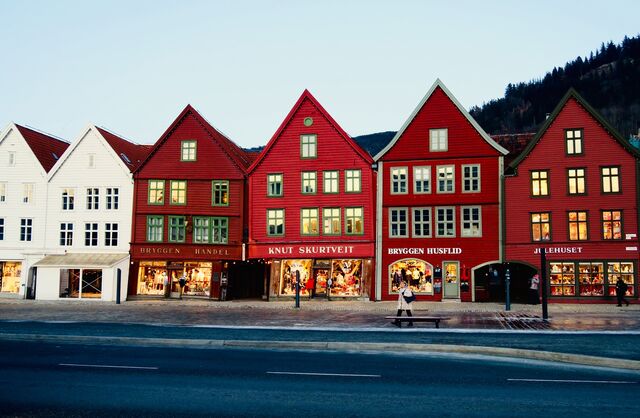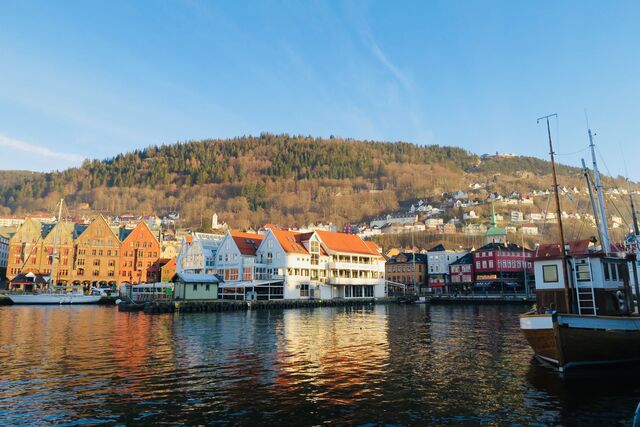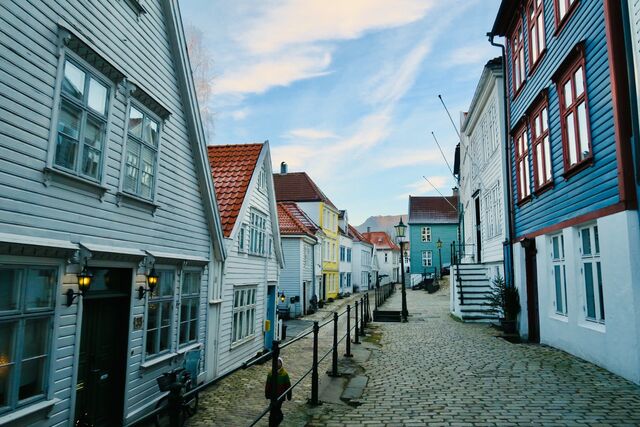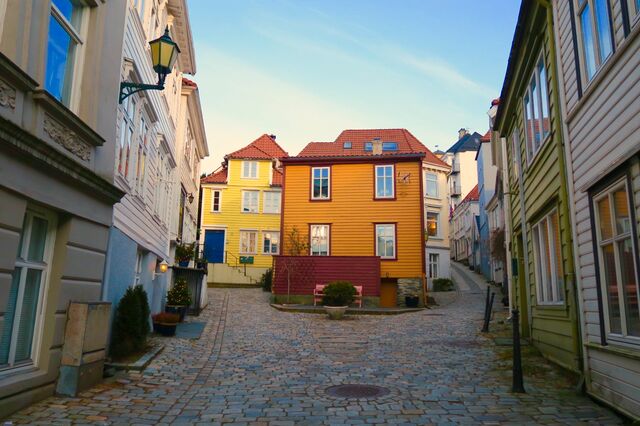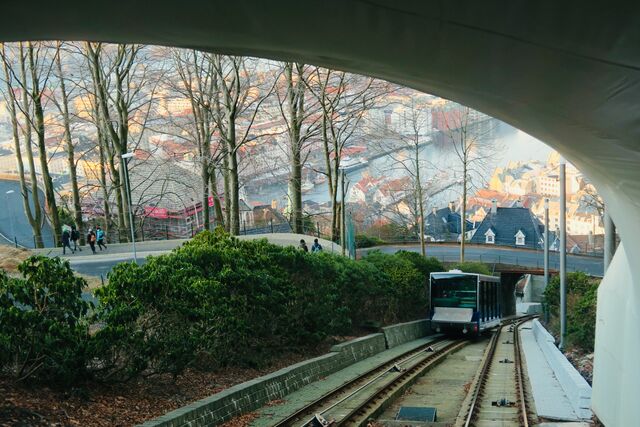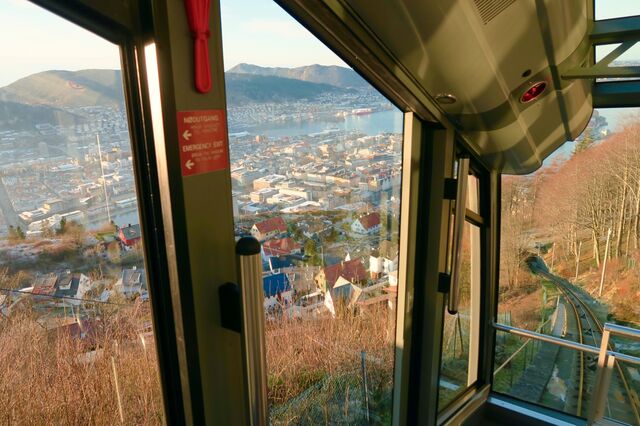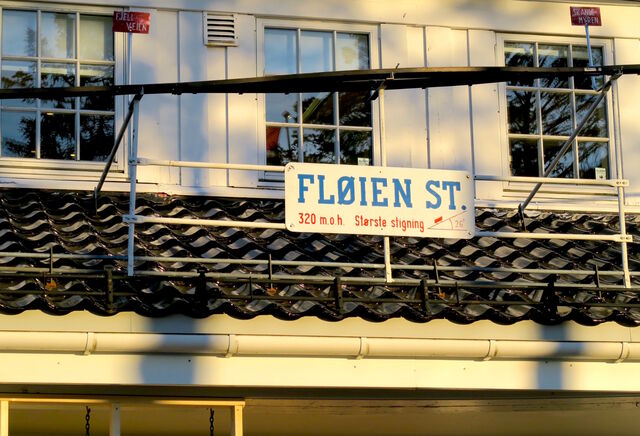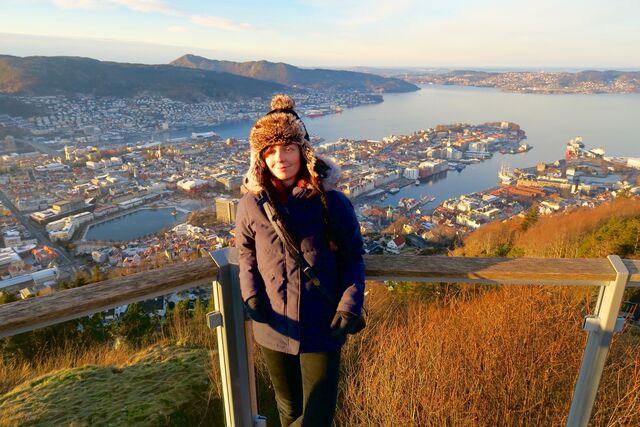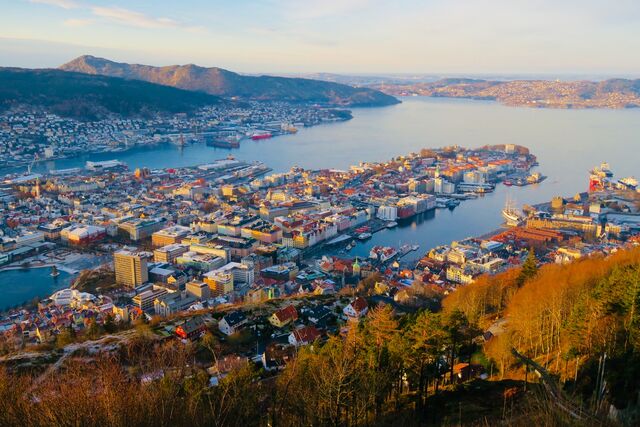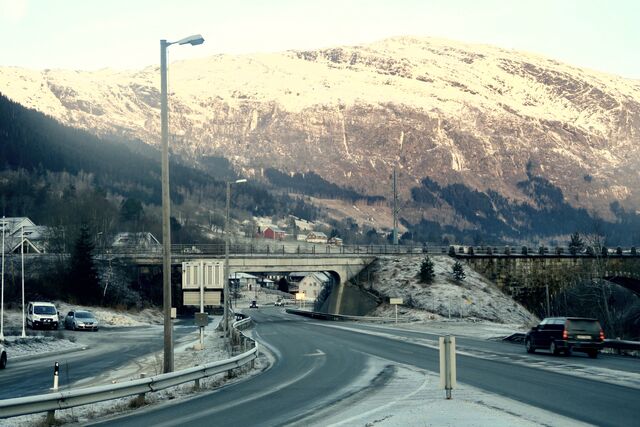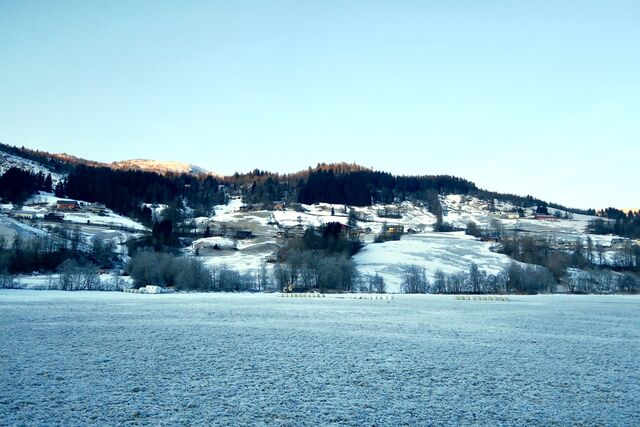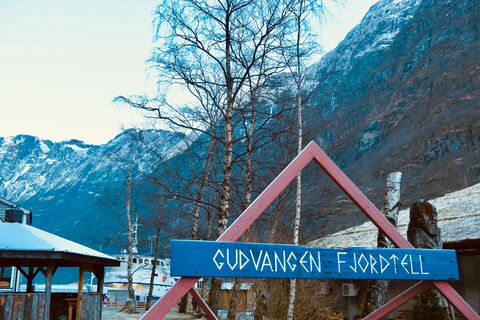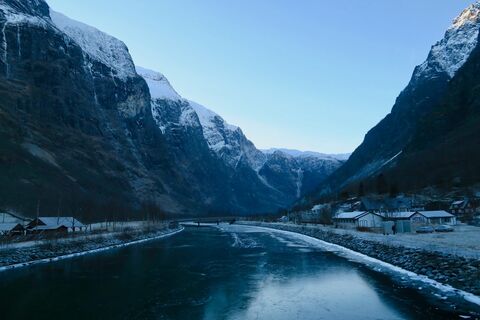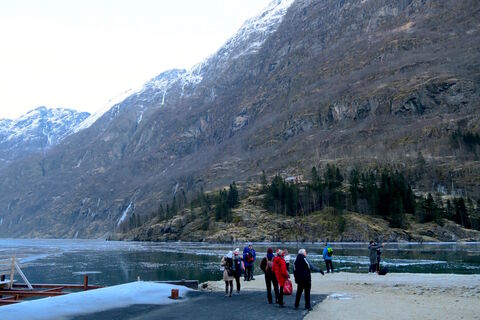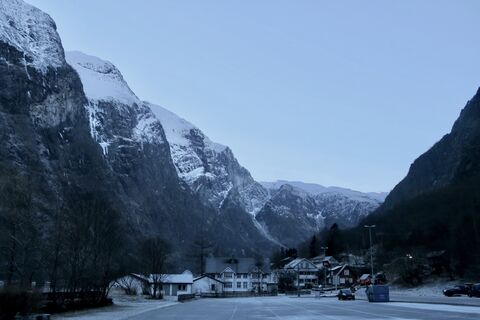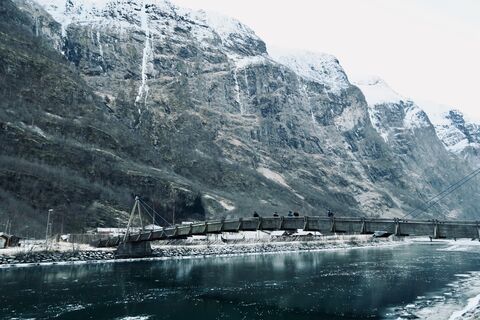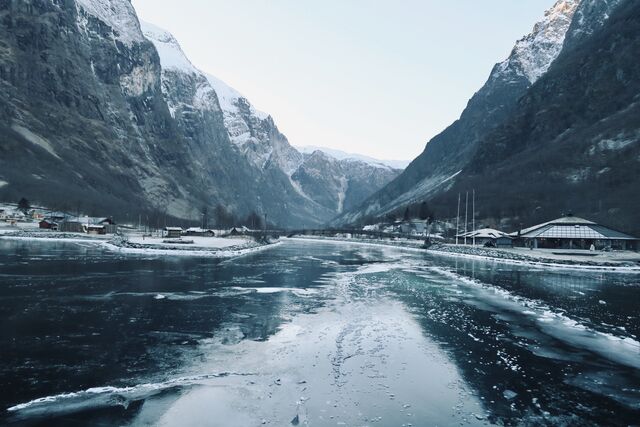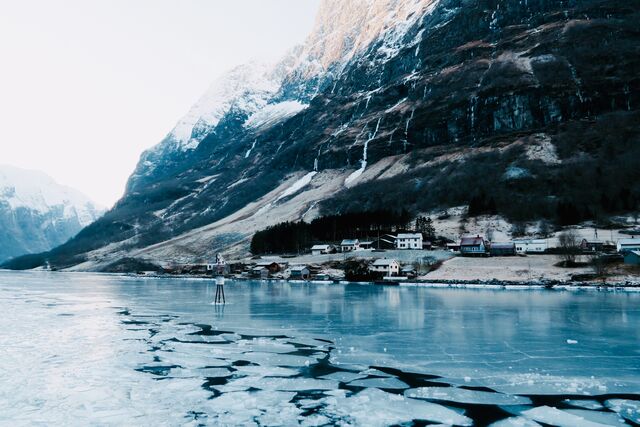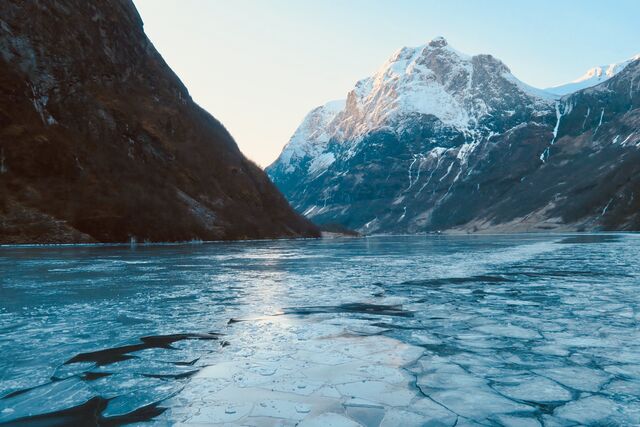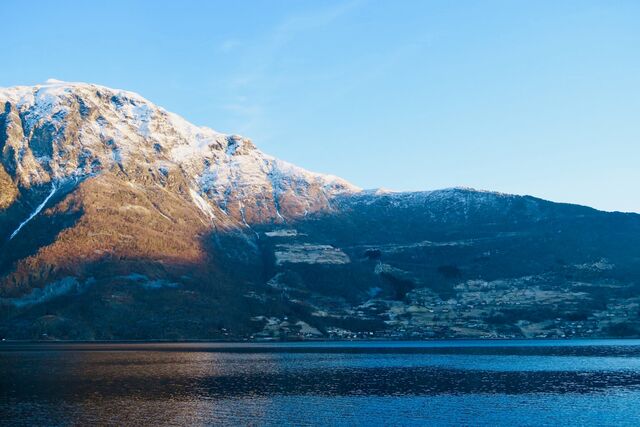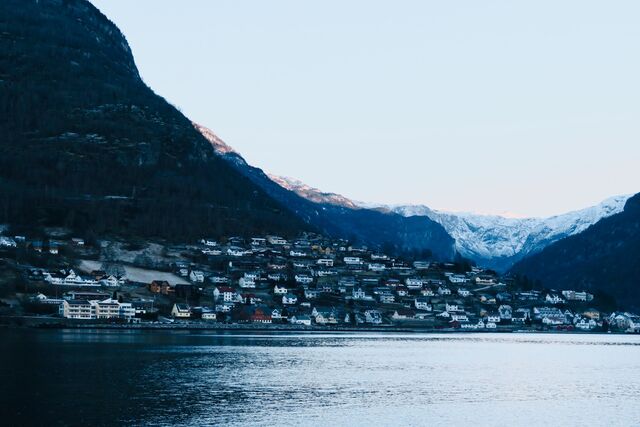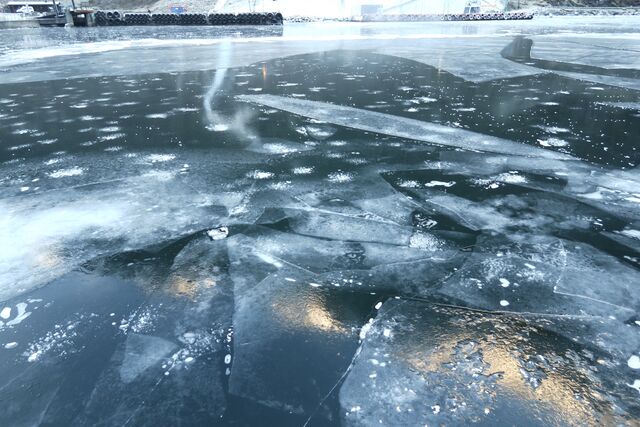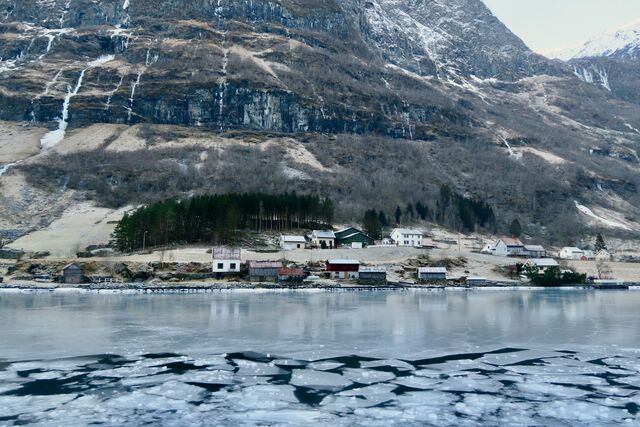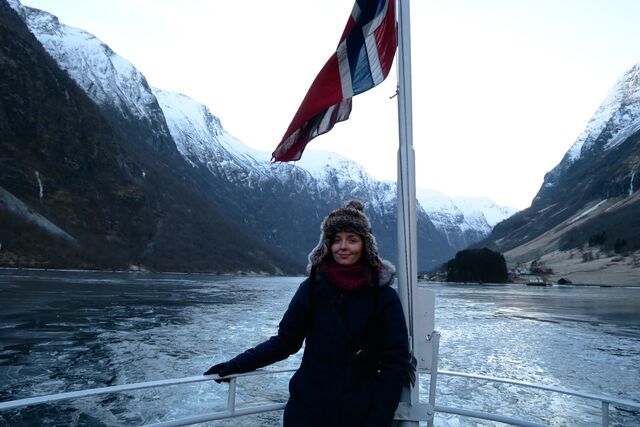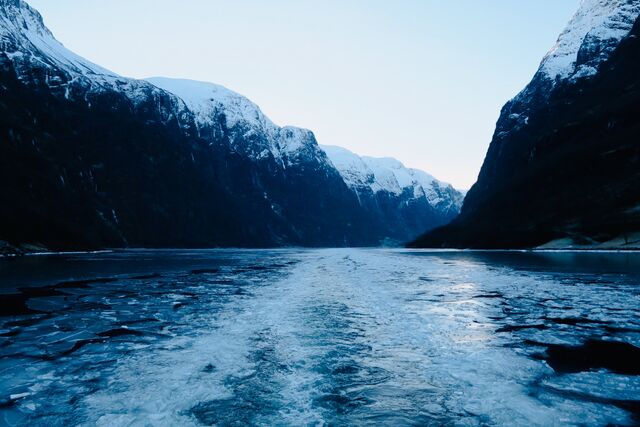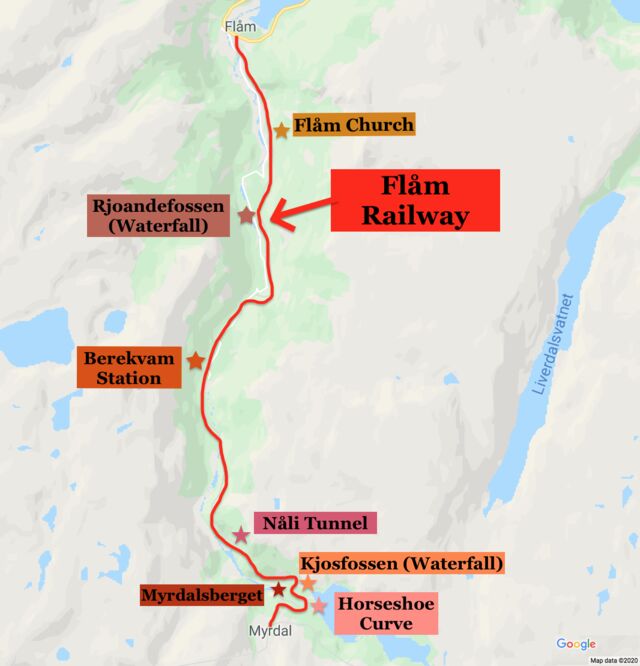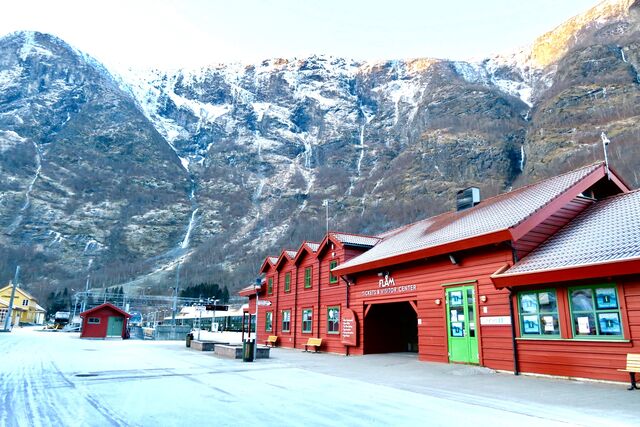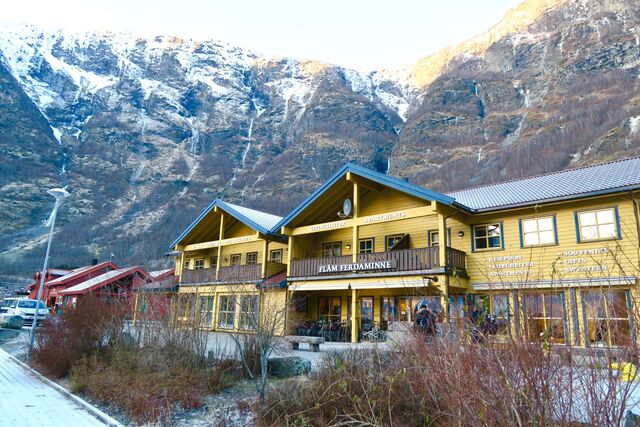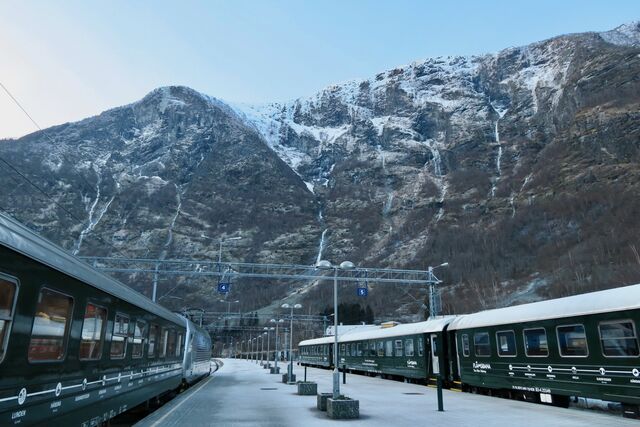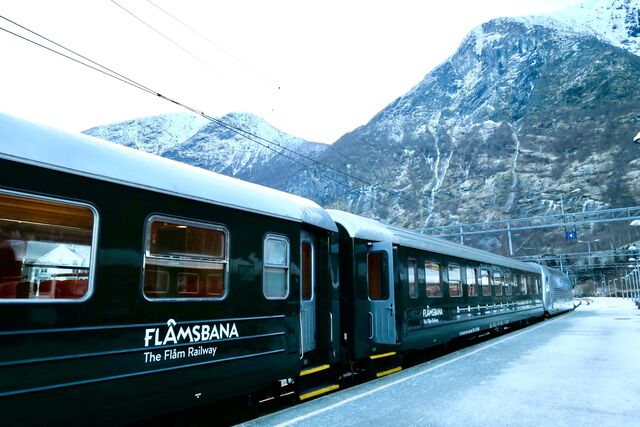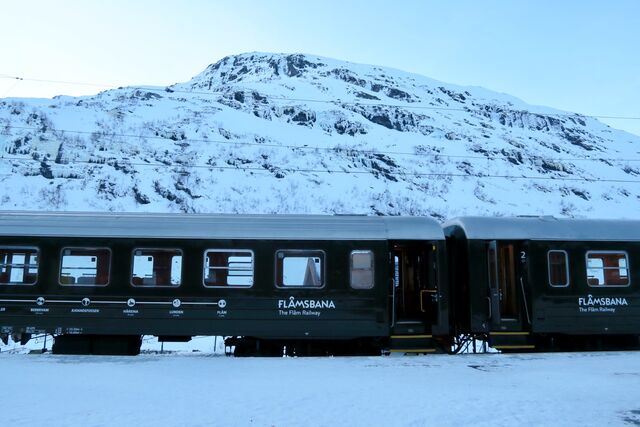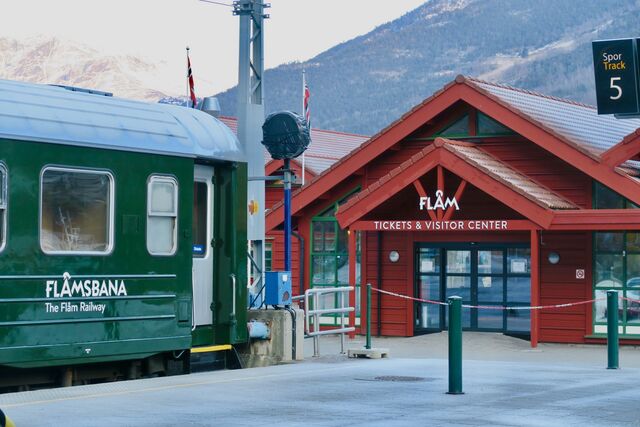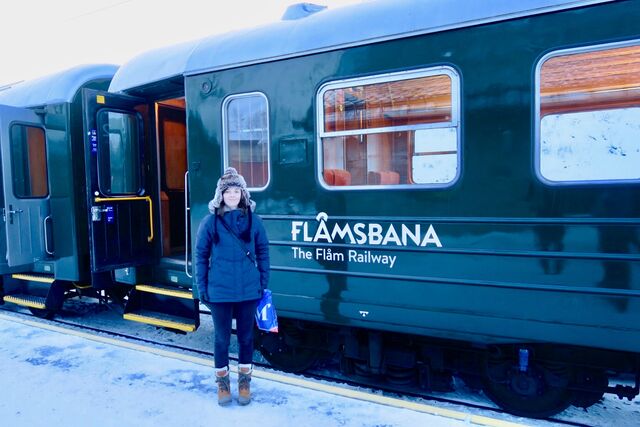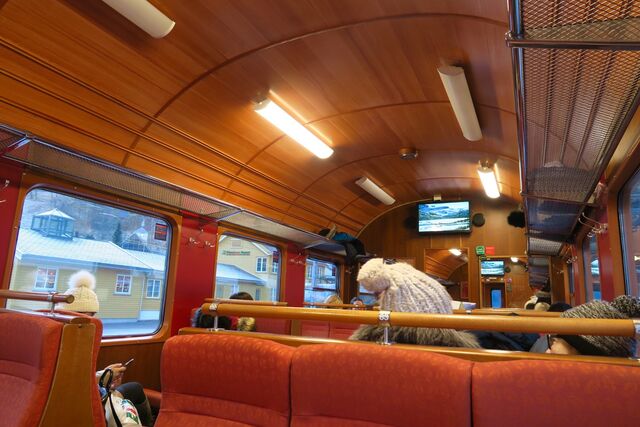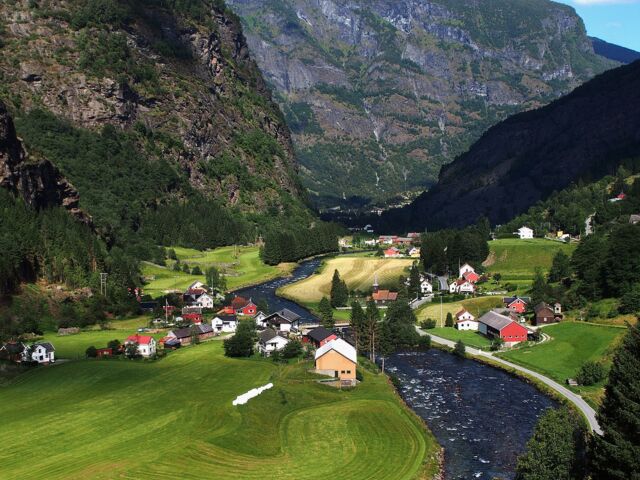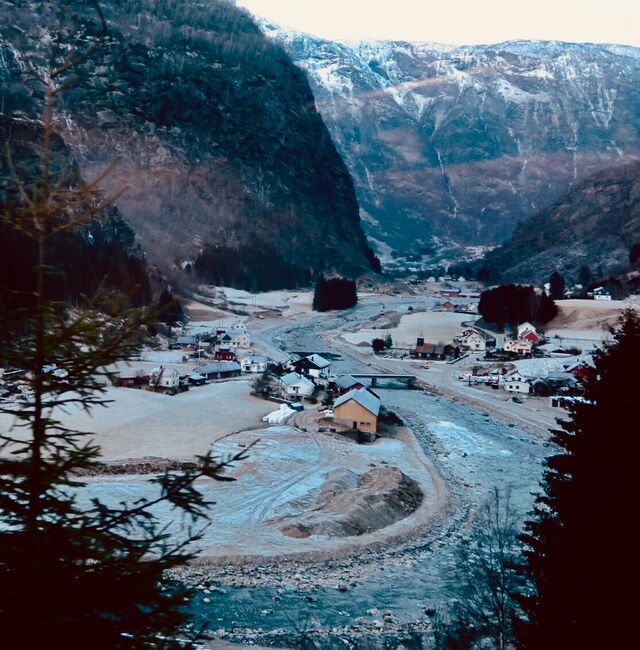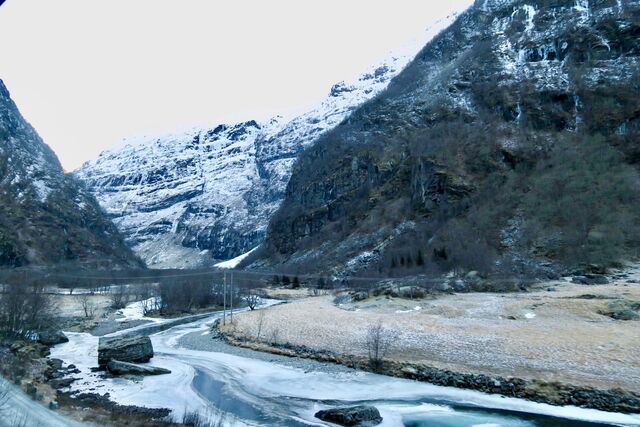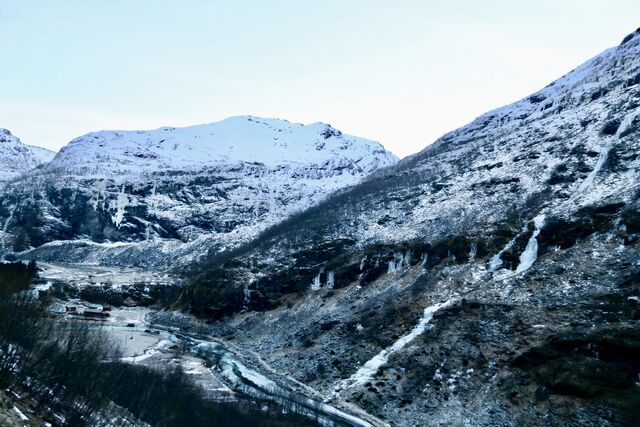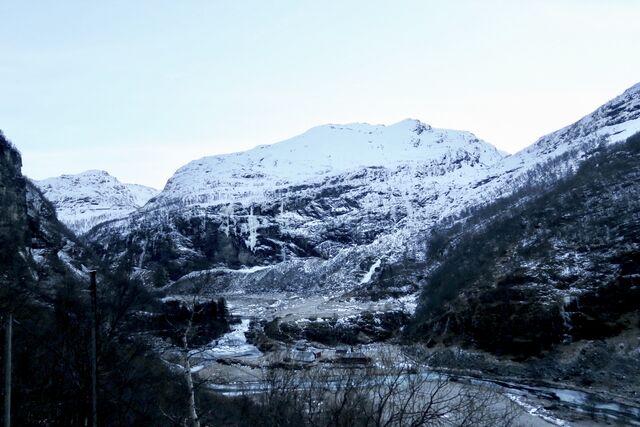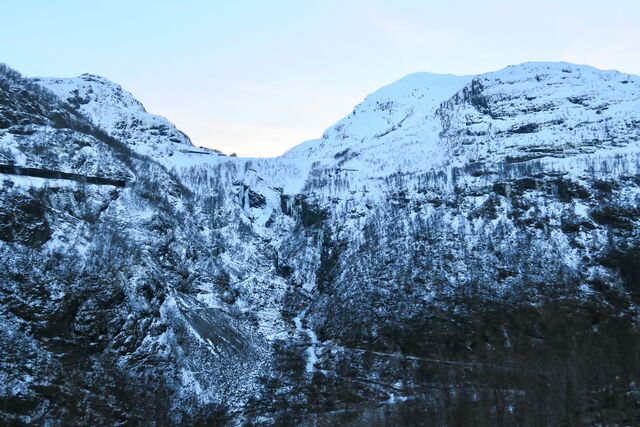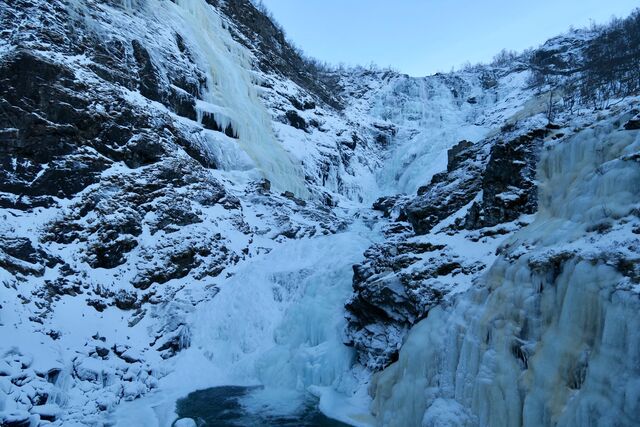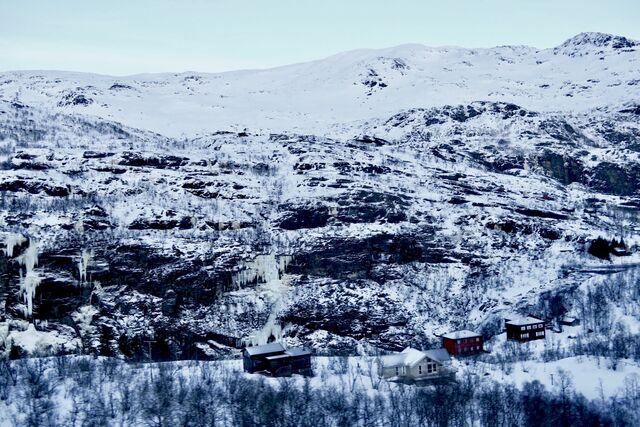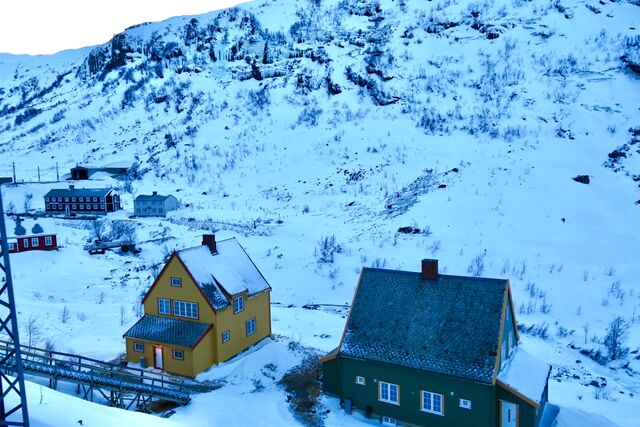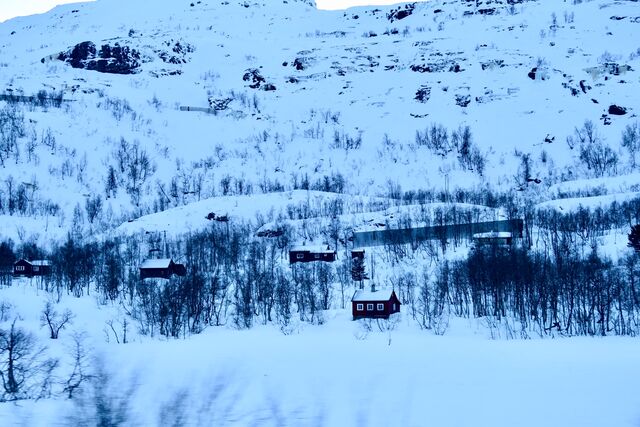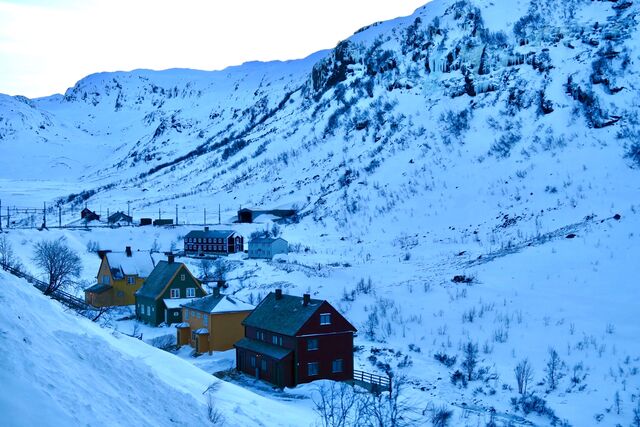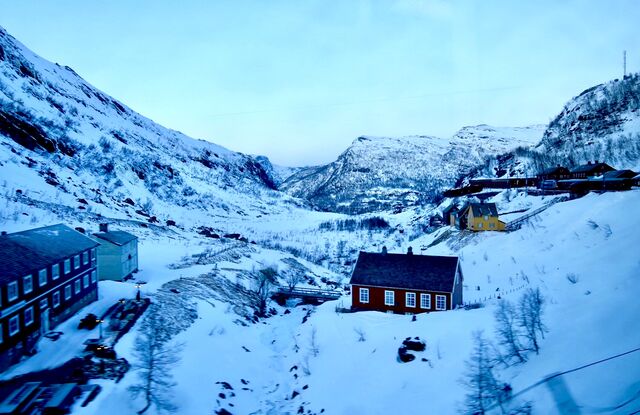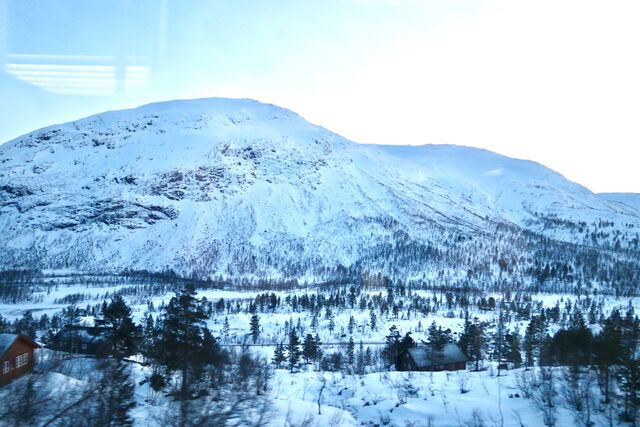The Flåm Railway (Flåmsbana in Norwegian) stretches between Myrdal and Flåm in South-Western Norway. Opened in 1940, it remains the steepest standard-gauge railway in Europe. I took this rail journey in January 2016 as part of a ‘Norway in a Nutshell’ day trip, departing from Bergen. The itinerary for the trip is depicted in the image below.
The Norway in a Nutshell product consists of a self-guided trip on public transport, with all tickets and connections arranged for passengers. Leaving early in the morning, I rode the Bergen Railway from Bergen to Voss. Second, I took a scenic bus trip from Voss to the village of Gudvangen. Located at the end of the Nærøyfjord, Gudvangen also marked the starting point for my fjord cruise through the Nærøyfjord and Aurlandsfjord. Arriving in the village of Flåm, it was then time for the pièce de résistance – the Flåmsbana – which transported me to the village of Myrdal. After careful consideration, I would rate the Flåmsbana as the most spectacular train journey that I have taken to date. Alighting in Myrdal, the final stage of the trip consisted of another ride on the Bergen Railway for my return journey to Bergen.
As I took this trip in the middle of the Norwegian winter, daylight hours were limited with the sun rising at approximately 9.40am, and darkness once again setting in around 3.45pm. As such, the majority of my trip on the Bergen Railway (in both directions) was in darkness. I was prepared for the limited daylight hours and had planned my trip so that the fjord cruise and (most importantly) the Flåm railway would be experienced in the daylight hours. Whilst the whole trip would have been in daylight during the summer months, I much preferred being able to enjoy the winter scenery, and now have a reason to return one day to ride the whole of the Bergen Railway from Oslo to Bergen.
Bergen
Bergen is the second largest city in Norway and is located on the country’s West Coast. I arrived in the ‘city of seven mountains’ via a flight from Reykjavik and trip on the Flybussen (airport bus) to the city centre. Disembarking at Bergen’s Fish Market, my accommodation was only a few minutes walk away.
The city’s most notable attraction is Bryggen – a row of colourful heritage buildings which line the Vågen harbour. The area is listed on UNESCO’s World Heritage List and consists of museums, restaurants, and unique stores along the wharf.
I also enjoyed walking around Bergen’s historic Nordnes neighbourhood, with its wooden houses and cobbled streets.
A further highlight was Fløibanen – a funicular railway which connects the city with Mount Fløyen. Opened in 1918, the railway is both Bergen’s most popular tourist attraction and a mode of transportation for those who live on the mountainside and the children who attend the kindergarten at the top of the mountain. The Fløibanen line is 844 metres long, and the journey to the summit took approximately seven minutes. The carriages had glass ceilings and panoramic windows for sightseeing, and the viewing platform at the top of Mount Fløyen provided even greater views of the city and surrounding fjords and mountains.
Norway in a Nutshell
I booked my Norway in a Nutshell trip the day before my journey at Bergen’s Tourist Information Centre. I knew from my research that tickets would not sell out during the winter months and thus decided to wait until my arrival in Bergen so that I could decide, based on the weather, which day was best to take the trip. The total price was around 1600 Norwegian Kroner. The pictures below show the view from the bus trip between Voss and Gudvangen.
Arriving in Gudvangen which lies at the base of the Nærøyfjord, there was just under an hour until the start of the fjord cruise. This was a perfect amount of time to walk around the end of the fjord, take pictures of the spectacular scenery, and head indoors for some souvenir shopping once it became too cold.
The two hour fjord cruise which followed was spectacular. Both the Nærøyfjord and Aurlandsfjord provided dramatic views of steep mountainsides, frozen waterfalls, and hanging valleys. Both fjords are branches of the Sognefjorden – Norway’s largest and deepest fjord. The Nærøyfjord is also one of the narrowest fjords in Europe, at only 250 meters wide at its narrowest point. The mountains surrounding the fjord reach up to 1,660 metres in height. I spent the majority of the trip on the deck of the ship, taking photos and enjoying the scenery. At times, I was the only person outside, with the minus 15 degrees Celsius temperature encouraging most passengers to stay inside the ship.
Flåm Railway
Arriving in Flåm at the inner end of the Aurlandsfjorden, I had about 45 minutes to spare before my trip on the Flåmsbana.
Flåm – meaning ‘a small meadow surrounded by steep mountains’ – is a picturesque village with a population of around 400 people. When the train arrived at Flåm Station, I promptly secured a seat on the right hand side of the train (which I had read was the best side of the train for trips departing Flåm).
The total journey time on the Flåm Railway was approximately 59 minutes, with the train travelling at a maximum speed of 30 km/h downhill and 40 km/h uphill. On route to Myrdal, the train passed through 11 stations and 20 tunnels (18 of which were built without machinery). As the train emerged from each tunnel, there were awe-inspiring views of snow-capped mountains, waterfalls, and deep ravines. Of all the train journeys I have ever taken, the passengers on the Flåmsbana were by far the most excitable. Throughout the whole journey, almost everyone in my carriage ran from side to side, eager to see the spectacular scenery on both sides of the track.
I first heard of Flåm and was inspired to travel to the area after seeing a tiny picture of the Flåm Valley in a travel brochure, similar to the image below.1
I eagerly awaited being able to capture this view for myself as the train rolled through Flåmsdalen. Admittedly, my picture of the village (below) is somewhat less spectacular, but it was an exciting moment nonetheless.
The picture shows the Old Flåm village centre and was taken after we had passed Lunden and Håreina stations. Flåmselvi, the river which runs through the centre of the village, empties into the Aurlandsfjorden. The wooden Flåm Church (built in 1670) and graveyard are visible to the right of Flåmselvi.
After passing the 310 metre Rjoandefossen (waterfall), the train continued uphill. The views became more spectacular with each passing minute as the train climbed and the snow became heavier. Further along the route we reached Berekvam Station – the only station on the line to have a passing loop, allowing the trains travelling in each direction to meet. A series of short tunnels then followed, before we reached the Nåli Tunnel – the longest on the line at 1341 metres. This was one of the two tunnels on the route to be built with machinery (the other being Vatnahalsen Tunnel).
Shortly after, there was a great view of Myrdalsberget and the 21 hairpin turns down the mountain.
The train then stopped at Kjosfossen Station, allowing passengers to disembark at the 225 metre Kjosfossen (waterfall). During the main tourist season, an actress dressed as a seductive Scandinavian folklore forest creature apparently sings and dances in front of the waterfall as the train arrives. Unfortunately my winter visit lacked this unique element. I had also read that the tracks run so close to the falls that passengers can feel the water spray as they stand on the platform. My experience, however, was one of an almost entirely frozen waterfall, as can be seen in the image below.
Following Vatnahalsen Tunnel and a horseshoe curve, the train passed through several shorter tunnels before arriving at Myrdal Station.
Alighting in Myrdal, I then changed trains to the Bergen Railway for the return trip to Bergen.
Image by rheins (2013) and licensed under CC BY 3.0. ↩︎
